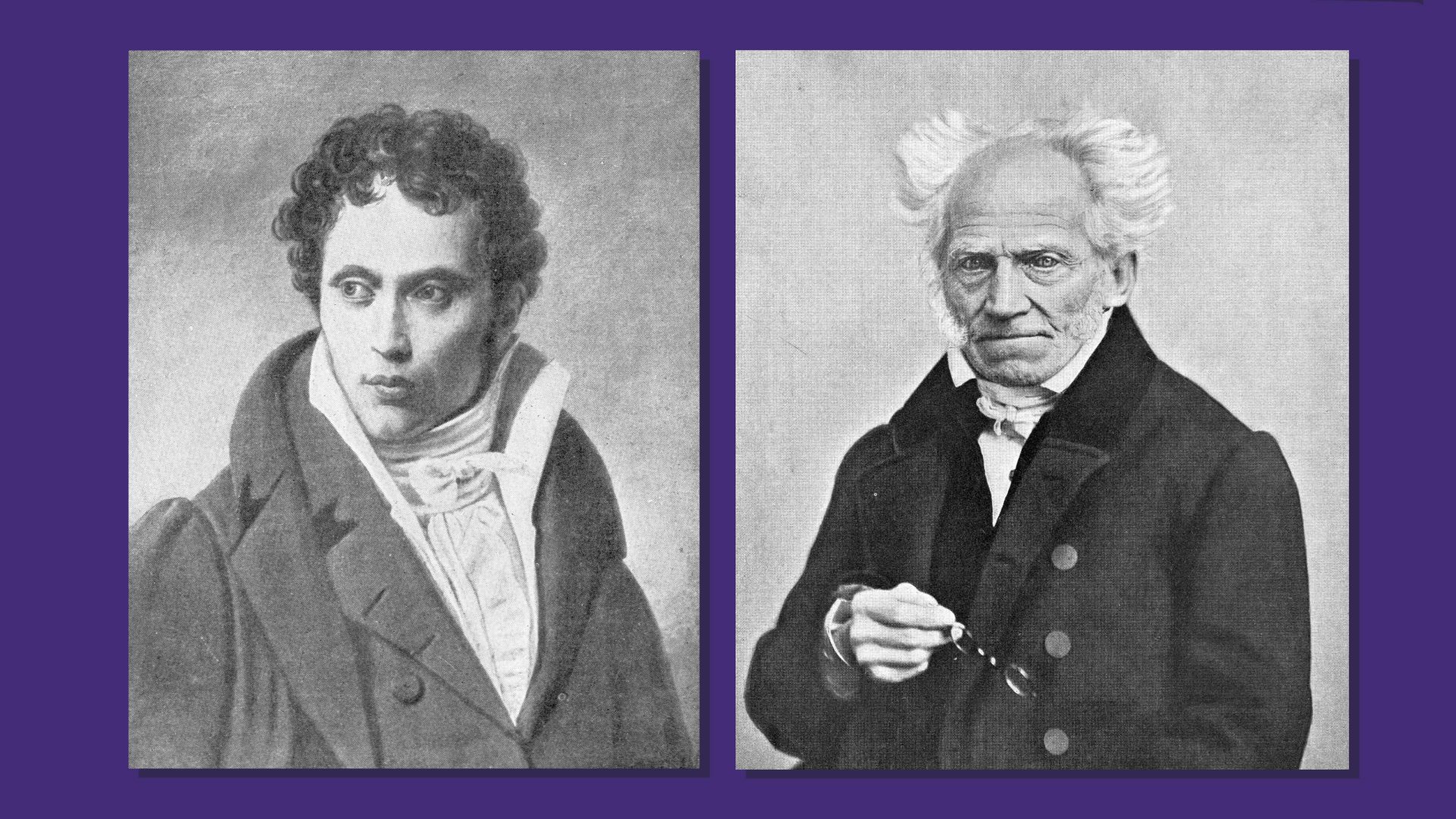One of the great European philosophers, Arthur Schopenhauer, was born on February 22, 1788 in Danzig, which is now Gdansk. Schopenhauer’s greatness lies not just in what he wrote, but that he wrote to be understood. He was also unusually open to philosophy from other traditions. His major work The World as Will and Representation was remarkable in that it drew not just on western philosophy but also on the ancient Sanskrit texts known as the Upanishads, and on Buddhist philosophy too.
But, although he was a relatively young man when he wrote that book, for those of us who visualise philosophers when their names are mentioned, Schopenhauer is an old, angry-looking man with mutton chops and crazy white hair sprouting from the sides of his head. This image was fixed by a series of photographs taken in 1855.
An 1815 painted portrait of him by Ludwig Sigismund Ruhl as a clean-shaven, rosy-cheeked whippersnapper in his twenties has also survived. In that, he looks like a slimmer, more intelligent and more handsome version of Elon Musk. Yet it is the photographic portraits of him as an old man that stick in the mind, probably because they more closely fit with what we think a philosopher should look like.
Philosophy from its earliest days has focused on the difference between appearance and reality, though, and occasionally people have commented on thinkers whose faces don’t fit with stereotypes. There is a nice example of this in James Caulfield’s contemporary description of the 18th-century philosopher David Hume:
“His face was broad and fat, his mouth wide, and without any other expression than that of imbecility. His eyes vacant and spiritless, and the corpulence of his whole person was far better fitted to communicate the idea of a turtle-eating alderman than of a refined philosopher.”
Caulfield’s prejudiced surprise that Hume was far from slim and looked a bit stupid, and yet was a subtle and brilliant thinker, is perhaps an early manifestation of what the philosopher Kate Manne, in her recent book about conscious and unconscious bias against people who weigh more, Unshrinking, calls “fatphobia”. Hume, unlike Jean-Jacques Rousseau, for example, just didn’t look like a philosopher was meant to look. A bias against corpulence and an apparently empty stare left Caulfield and others disconcerted. This should serve as a reminder that physiognomy is largely a pseudo-science and that faces are not always as legible as we like to think they are.
Greek statues have long set the expectations for philosophers’ appearances. Judging by these, philosophers are predominantly white men with beards. Historically, of course, sexism and racism have excluded many people from higher education, and the history of western philosophy was indeed largely written by white European men, mostly from well-to-do backgrounds, many with extensive facial hair.
Raphael played variations on the blokes-with-beards theme in his painting The School of Athens, which has been reproduced ad nauseam by lazy illustrators. At the centre of that 16th-century mural, there is an image that has graced a thousand book covers: an older bushy-bearded Plato points upwards to the Forms – the abstract universal concepts that Plato believes are “true” reality – while a younger Aristotle, also sporting a beard, reaches out into the world.
There are certainly philosophers who would not look out of place in that painting: put him in a toga, and Daniel Dennett, for example, would make a good Plato. Arthur Danto would have made a very convincing Socrates in a biopic. But the stereotype leaves no room for a Simone de Beauvoir, a Hannah Arendt, or an Angela Davis, not to mention the numerous young female philosophers making very significant contributions to the subject today.
When Bryan Magee made a TV series about living philosophers in 1978 he called it Men of Ideas (although he did somehow slip Iris Murdoch into the series). That would be unthinkable now, of course. A 2020 book edited by Rebecca Buxton and Lisa Whiting, The Philosopher Queens, included portraits of 20 female philosophers.
But still, stereotypes are hard to break. The weblog Looks Philosophical was set up in 2012 to combat prejudices about the appearances of philosophers. It’s difficult to disagree with its message:
“Philosophers come in a range of genders, colours, sizes, classes, ages, and levels of tweediness. Our discipline isn’t the rarefied domain of the sophisticated hyper-intellectual. It’s simply the domain of people who like to think about philosophy. And people who like to think about philosophy can look like… well, pretty much anything.”
That’s true today, but sadly it hasn’t always been so.



